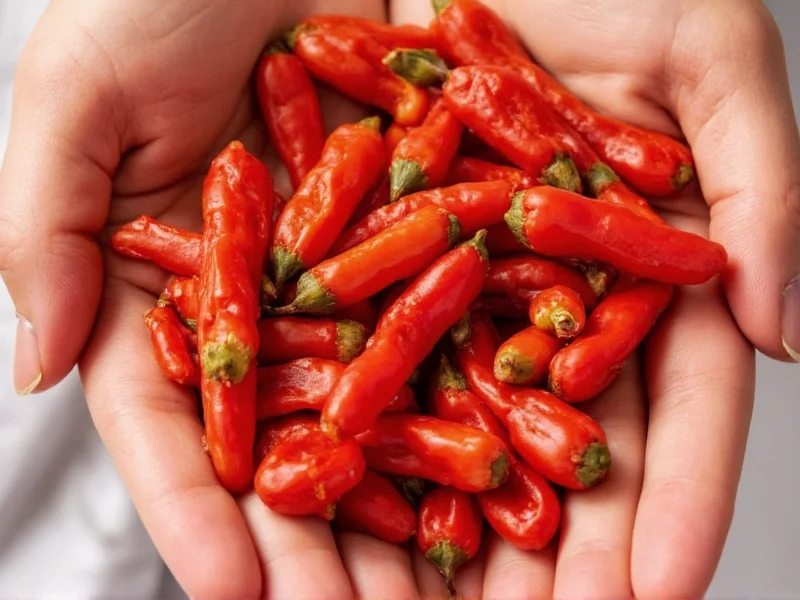Chili peppers contain capsaicin, an oil-based compound that triggers intense burning sensations when it contacts skin. Unlike many irritants, water won't help—and can actually worsen chili burn by spreading the capsaicin. Understanding the science behind capsaicin is crucial for effective removal.
Why Water Makes Chili Burn Worse
Capsaicin is hydrophobic, meaning it repels water. When you rinse chili-exposed hands with water, you're essentially spreading the oil across your skin rather than removing it. This explains why the burning sensation often intensifies after washing with water alone. The solution requires breaking down the oil molecules through proper chemistry.
Most Effective Methods to Remove Chili From Hands
These techniques work by dissolving or neutralizing capsaicin. Always start with the most effective solutions first:
| Method | Effectiveness | Time Required | Notes |
|---|---|---|---|
| Oil + Dish Soap Wash | ★★★★★ | 2-3 minutes | Most reliable immediate solution |
| Alcohol Wipe | ★★★★☆ | 1-2 minutes | Use 70% isopropyl alcohol |
| Baking Soda Paste | ★★★☆☆ | 5-10 minutes | Good secondary treatment |
| Vinegar Soak | ★★★☆☆ | 5 minutes | Helps neutralize pH |
Step-by-Step Removal Process
Immediate Action: Oil and Soap Method
- Apply 1-2 tablespoons of vegetable oil, olive oil, or coconut oil to affected areas
- Gently rub oil into skin for 30 seconds to dissolve capsaicin
- Add dish soap (which cuts through oils) and lather thoroughly
- Rinse with warm (not hot) water
- Repeat if burning persists
This approach works because dish soap contains surfactants that break down oil molecules, while the initial oil application helps dissolve the capsaicin before washing. For severe cases, follow with a milk soak as dairy contains casein that binds to capsaicin.
Alternative Solutions When Oil Isn't Available
If you don't have cooking oil immediately accessible:
- Alcohol-based hand sanitizer: Apply and rub for 60 seconds before washing with soap. The alcohol dissolves the capsaicin oil.
- Vinegar solution: Mix equal parts white vinegar and water, soak hands for 5 minutes. The acidity helps neutralize capsaicin's alkaline properties.
- Baking soda paste: Combine 3 parts baking soda with 1 part water, apply as a paste and leave for 5-10 minutes before rinsing.
What Not to Do With Chili Burn
Avoid these common mistakes that worsen chili exposure:
- Don't use only water - spreads the oil and increases burning area
- Avoid touching your face - capsaicin transfers easily to sensitive areas
- Don't rub vigorously - damages skin barrier and increases absorption
- Skip hot water - heat opens pores, allowing more capsaicin absorption
Preventing Chili Burn During Food Preparation
Professional chefs and frequent cooks use these prevention strategies:
- Wear nitrile gloves (latex doesn't block capsaicin effectively)
- Apply a thin layer of oil to hands before handling chilies
- Use a dedicated cutting board for spicy ingredients
- Wash knives and surfaces with oil-based cleaner after use
- Keep a bowl of oil nearby for quick hand treatment
When to Seek Medical Attention
Most chili burns resolve within 24 hours with proper treatment. Consult a healthcare provider if you experience:
- Severe blistering or skin damage
- Burning that persists beyond 48 hours
- Signs of infection (increased redness, swelling, pus)
- Accidental contact with eyes or mucous membranes
For eye exposure, immediately flush with saline solution for 15 minutes and seek emergency care. Never use oil-based treatments near eyes.
Long-Term Relief Options
If residual burning continues after initial treatment:
- Apply aloe vera gel to soothe skin
- Use over-the-counter hydrocortisone cream
- Try a cool (not cold) compress
- Moisturize with fragrance-free lotion after skin calms











 浙公网安备
33010002000092号
浙公网安备
33010002000092号 浙B2-20120091-4
浙B2-20120091-4